Masdar’s Global GenZ Sustainability Survey found that we believe that climate change is the biggest threat over the next decade. The solution to mitigate climate change lies in energy and we need to develop energy technology that is not only clean and reliable, but also affordable and abundant. Small modular reactors are simple and flexible and can be scaled up or down according to needs. This advanced nuclear technology is ready to be deployed by 2026. All we need is additional investment for commercialization and push from policymakers to make it happen.
|
This video is my entry to the 2017 Masdar Engage Blogging Contest, part of Abu Dhabi Sustainability Week. Vote here for my video!
Masdar’s Global GenZ Sustainability Survey found that we believe that climate change is the biggest threat over the next decade. The solution to mitigate climate change lies in energy and we need to develop energy technology that is not only clean and reliable, but also affordable and abundant. Small modular reactors are simple and flexible and can be scaled up or down according to needs. This advanced nuclear technology is ready to be deployed by 2026. All we need is additional investment for commercialization and push from policymakers to make it happen.
0 Comments
By Lenka Kollar This post is part of Masdar's Engage Blogging Contest for Abu Dhabi Sustainability Week 2016. Vote for my entry here. From putting a man on the moon to civilian use of GPS, scientific innovation has often been the result of public-private partnerships in which the government sponsors basic research and private companies continue development and commercialize the innovation. Governments can adopt policies to make this process more efficient by incentivizing companies to innovate and help solve the world’s biggest challenges today, including the transition to a sustainable and clean energy economy. Successful government innovation programs have often involved two things: research and incentive. The government needs to provide funding and facilities for basic scientific research that companies do not have the resources to undertake. Take for example the development of first mass-produced plug-in hybrid electric car in the United States, the Chevy Volt. Government-sponsored research at Argonne National Laboratory created the technology for the battery that powers the car in electric mode. Chevrolet, which did not have the resources and facilities to do this kind of research, then commercialized the batteries for use in the cars. Private companies can also get started earlier in the process by utilizing existing government or university facilities and funding for research. For example, Masdar City in Abu Dhabi creates a community and provides facilities for research in sustainable technology. With Siemens regional headquarters onsite and other companies taking part, Masdar City provides for an innovation hub that fosters public-private partnerships. More than making basic research and facilities available to companies, the government can also incentivize private innovation with support and funding. A recent and ongoing example of this is the US Department of Energy investment in innovative small modular reactors for clean and sustainable energy production. Through a five-year cost-share agreement, the government invests up to half of the total project cost, with the project’s industry partners matching this investment by at least one-to-one. The Department of Energy also provides assistance for engineering and design certification with the regulator. Government support is essential for both established companies and start-ups in developing such a complex technology with heavy regulation. Governments can develop policies to streamline public-private partnership and enable the private sector to develop the goods and services necessary for a global transition to a sustainable economy. Governments should fund and provide access to scientific research and facilities and incentivize companies to innovate with support and investment, as showed in the examples above. In addition, the type of government support—research, facilities, funding, etc.—needs to be tailored to different technology sectors and economies. Advanced clean energy systems in developing economies may require a more hands-on government approach while energy efficiency could involve simple government grants to develop innovative products in this area. There is not one specific approach to fostering public-private partnerships but many pathways for the government to provide support and incentives for innovation in sustainable technology. The government should be an enabler (through effective support), rather than a disabler (through stricter regulations), in order to see the kind of large-scale transition that we need to achieve a sustainable economy. See my posts from previous Masdar blogging contests: Nuclear Energy's Role in Sustainable Development (2014) and Sustainable Urbanization 2015 to 2030 (2015).
by Lenka Kollar 18% of the worldwide population, or 1.3 billion people, don't have access to electricity, according to the OECD. And, nearly 40% (2.7 billion people) still rely on traditional biomass (wood, charcoal, agricultural waste and animal dung) for cooking. Most of these people are in Sub-Saharan Africa and developing Asia, regions that are experiencing large economic and populations growth. "Development of human capital is crucial in enabling progress towards modern industrial society. It is also nearly impossible to make significant progress without adequate, affordable and uninterrupted access to energy and services." -- IAEA Report on Climate Change and Nuclear Power 2015 Access to sustainable forms of energy leads to immediate and significant savings in labor needed for collecting traditional fuels. In addition, the use of artificial lighting provided by electricity allows people to work beyond daylight hours. With more time, people in developing countries can do more productive activities the generate more economic growth, such as education and industrial work.
Access to electricity allows for the refrigeration of food, thus reducing the risk of food shortages. Organizations have access to information technologies with electricity and computers, further enhancing education and communication. Energy is also a major contributor to improving access to modern medicine. Population growth and rapid urbanization will drive upward pressure on energy demand in developing countries, this will have a major impact on the environment. The magnitude of this impact on climate change will strongly depend on policy measures undertaken by governments. Governments and international organizations are working together to tackle the global development and energy challenge through the UN Sustainable Development Goals. In addition, a new legal instrument on climate change will be prepared and approved at the 21st Conference of the Parties (COP21) in Paris this December, superseding the Kyoto Protocol. A plan is needed to keep the "2-degree" scenario, meaning that we must control the emissions of greenhouse gases so that the increase of global average temperature will not exceed 2°C relative to pre-industrial levels. This will take a comprehensive plan of action involving sustainable development, energy efficiency, and, most importantly, extensive use of clean energy. For more information, check out the 2015 IAEA Report on Climate Change and Nuclear Power. "Is nuclear energy safe?" ...which one? That's what Kirk Sorensen, of Flibe Energy, answers when people ask him if nuclear energy is safe. When explaining the benefits of the Liquid Fluoride Thorium Reactor (LFTR) in the video above, he makes the point that there are many more technologies available to produce electricity from nuclear energy. LFTR is one of these and is different from traditional nuclear energy in use today in that is utilizes a liquid thorium fuel instead of solid uranium fuel that needs to be cooled by water.
Thorium is four times as more common in the Earth's crust than uranium and can also be utilized more efficiently in a reactor. The safety issues in traditional pressurized water reactors stem from the fact that the solid uranium fuel must be cooled by water that is kept at a high pressure. Because of this, safety systems are needed to cover the core with water and cool it in case of an accident. The LFTR utilizes fluoride salt as a nuclear fuel and therefore doesn't use water for cooling and doesn't have to operate at a high pressure. This means that the core will not 'meltdown' in the case of an accident. Although the current commercial nuclear reactors in operation around the world are safe, there are more advanced nuclear technologies that are even more safe and efficient. We are currently operating only the second generation of nuclear reactors. Imagine if we were still using the second generation of other technologies, like the car or the cell phone? It's time to invest in and develop these advanced nuclear technologies to meet the world's growing energy needs in a clean and sustainable manner. By Lenka Kollar Vote for my essay on Sustainable Urbanization in the Masdar Engage blogging contest here! I had the chance to tour a unique development while visiting Abu Dhabi with INSEAD. As I wrote in my earlier posts, Wealth Before Development and Beyond the Oil Era, Abu Dhabi is investing in diversifying its economy from oil. One of these initiatives, sponsored by Mubadala, is Masdar City. This development is completely sustainable and carbon-neutral and currently houses the Masdar Institute of Science and Technology, in partnership with MIT. The following are some pictures and things I learned from the tour. The entrance into Masdar City, you can already see the unique building structures and solar panels. Many of the structures in the city are based on how previous generations kept their settlements cool before development. The artistic panels on the student dormitories provide privacy and shield the sun. The wind tower directs the cooler upper-level winds into the square below. Looking out from Masdar City, you can see the 10 MW solar power plant (above) that feeds the grid. Because the plant produces more electricity during the day than the city needs, it does not directly power it. The first company to move into the city is Siemens, with its regional headquarters sustainable building shown below. One of the original ideas was to have personal self-driving vehicles (shown below) to transport people around the city. However, the system ended up being to expensive and only a few vehicles were made to transport people from one end of the city to the other. They use magnets to keep the cars in line, but I bet that Google's GPS self-driving technology would be more effective. Once completely constructed, Masdar City will be 6 sq. km and host 50,000 people for working and living. The model (shown above) includes sections for offices, living, education, and leisure. The research institute is already developing technologies revolved around sustainability and renewable energy. The UAE is actually the only OPEC national currently exporting both hydrocarbon and renewable energy.
While Masdar could serve as a model for other sustainable cities, the types of buildings and processes needed drastically vary by climate. The sunny, dry heat of the desert of the desert in Abu Dhabi presents completely different challenges for saving electricity than the bitter cold winters in Chicago, for example. Because most of the growth in urbanization will happen in existing cities, Masdar should also research how to retrofit urban areas to make them more sustainable. By Lenka Kollar
This post is written for Masdar's 2015 Engage Blogging Contest. See my post on Nuclear Energy's Role in Sustainable Development entered in last year's contest. In the next 15 years, more and more people will move to cities as populations grow and countries expand from agriculture and resource based economies to technology and knowledge based economies. We can already see the strain that rapid urbanization has on existing cities as they struggle to keep up. Severe traffic and overcrowded public transportation is common. Housing is expensive and unavailable near city centers, where most of the jobs are. While it is relatively easy to build an efficient and sustainable city from scratch, retrofitting existing cities in a sustainable way to meet the demand for rapid urbanization will be the real challenge in the next 15 years. Many older cities, such as in Europe, have done a good job providing public transportation by building extensive metro systems underground. Others have distributed the strain on transportation by creating industrial hubs outside of the city center. Some urban areas have designated plots of land for community gardens. These ideas from cities that have already changed to match growing urbanization can be used to inspire and plan for future growth in a sustainable way. Multiple City Center Hubs The classic commute into downtown in the morning and back to the suburbs is archaic and cities should rethink where and how they allow companies to establish offices and operations. One example is to designate industrial hubs within the city and suburbs. Having multiple “city centers” would distribute the commute and allow people to live closer to work. Clusters of companies in similar industry chains would allow them to still effectively do business with each other and also share industrial, community, and even human resources. Smart Transportation It is no doubt that personal vehicles are one of the biggest contributors to green house gas emissions and unsustainable practices within cities. While having multiple city centers may ease commute distance, urban areas need to completely rethink their transportation infrastructure to match rapid urbanization. Data and technology can be used to develop a smart transportation system that allocates supply to demand. For example, Google Maps can already tell you and compare what your options are for getting to your destination. This data can be used to plan individual routes that minimize travel time to ease the strain on transportation systems according to demand. Smart transportation planning can be very effective if used by everyone, and would be further enhanced by self-driving vehicles that talk to each other and plan the most effective routes as a whole system. Functional Landscaping Green space is important for the environment and the sanity of urbanites but it can come at a large cost of resources, such as water. Dry regions especially use significant resources to keeps lawns and parks green. Cities should work to match their landscaping to their climate by using indigenous plants. In addition, green spaces can serve many purposes, including growing fruits and vegetables, recreational areas, and animal habitats. Thinking of landscaping as functional instead of visual will allow for cities to make better use of green space and use valuable resources more effectively. Rapid urbanization in the next 15 years will present many challenges to existing cities. They will need to look to the past to identify best practices in retrofitting for a new world. Major infrastructure evolutions in the past, such as in the change from horses to cars, have happened before. Urban areas can grow in a sustainable way but forward thinking and fresh ideas will be necessary. By Lenka Kollar
Last month I was on a regional train from Trnava to Bratislava in Slovakia accompanying my aunt who makes this trip every day for work. The train is connected to an electric line above the track, which naturally got me thinking about energy. The Bohunice Nuclear Power Plant supplies most of the electricity in this region so I thought it was pretty neat that I'm using public transportation power by nuclear energy. A robust transportation system connected to an electric grid with dependable and clean nuclear energy can really reduce dependence on fossil fuels and cut carbon emissions, which is already being done in some areas, as evidenced by Slovakia. My parents are from Slovakia and most of my extended family still lives there, so I visit quite often. Slovaks are very favorable of nuclear energy, probably because it provides about half of their electricity. It is dependable and cheap and the plants provide jobs. There are two power plants with a total of four nuclear reactors and two more under construction. A new reactor block at Bohunice is also planned. When he still lived in Slovakia, my father actually worked on the district heating system from the Bohunice plant to Trnava. Large pipes transport excess heat (in the form of steam) from the power plant to the city and provide heat for large buildings. This is a very energy efficient and sustainable process and is prevalent in Eastern Europe and Russia. The steam line is usually the tertiary loop so it is not radioactive. Energy independence in Eastern Europe is important and especially as tensions between the US/EU and Russia arise. Slovaks are also concerned about UN sanctions against Russia because their nuclear technology is Russian so they need to be able to work with Russian companies and buy Russian parts. Worldwide tensions can have serious implications on the energy sector in Europe. By Lenka Kollar
While many in the United States might spend some time thinking of the many options for recycling household goods or food waste, few focus on the many reusable options that are available for used nuclear fuel. The concerns with recycling used fuel include nonproliferation issues, cost, waste management requirements, and time factors related to radioactive decay, as expressed by Emory Collins from Oak Ridge National Laboratory at a gathering of the American Nuclear Society. However, Collins says that many of these issues can be addressed. “Engineered safeguards and safeguards-by-design can be used to provide adequate proliferation resistance and ensure nonproliferation security,” said Collins. “The cost to implement fuel recycle will be an insignificant change to the cost of nuclear electricity.” Currently in the United States, nuclear fuel assemblies are used in a commercial reactor for about three years until they are removed and safely stored. The current plan in the U.S. is to dispose of this used fuel in a permanent geological repository. However, up to 95% of the used fuel can be recycled and used again as fuel in a reactor. Other countries, such as France, are actively recycling their fuel to “close” the nuclear fuel cycle. Sven Bader of AREVA Federal Services made the case that uranium is a valuable nuclear material and that “its recovery and recycling saves natural resources.” AREVA is a French-based company that manages the recycling of used fuel in France and also provides the service for other European countries. While the technology is robust, Bader admits that without building new reactors in the US, there is a lack of justification for reprocessing because the economics do not add up. By Lenka Kollar There's been a lot of debate on the new Clean Power Plan proposed by the EPA last week. The plan outlines carbon reduction goals for each state that would cut carbon pollution by 30% by 2030, as compared to 2005 levels. Each state will come up with a plan to cut carbon emissions using the following mix of steps: 1. Improving efficiency at existing coal-fired power plants The bad news is that the coal industry is going to take a hit (see map of affected power plants above) and this may cause a rise in electricity costs. The good news is that the EPA is recognizing more than just the popular renewables, wind and solar, as "alternative" low-carbon generation. The word "nuclear" is mentioned 76 times in the proposed rule, mostly when talking about the current energy sector, but also as a solution to cutting carbon emissions. These statements about how states should meet carbon reduction goals are getting us really excited: ...including the projected amounts of generation achievable by completing all nuclear units currently under construction, avoiding retirement of about six percent of existing nuclear capacity… As the Atomic Power Review says, we've seen a complete change in the prospect of nuclear energy in the United States with this proposed rule. Utilities have been threatening to close nuclear plants because of economics (low energy prices caused by low natural gas prices and subsidies for solar and wind) but the EPA is now encouraging sates to keep nuclear power plants open and even build new ones.
This is great and all, but what will the policies to discourage premature retirement and encourage new construction of nuclear power plants look like? Does this mean subsidies for nuclear energy or maybe a reduction in the red tape associated with regulation? We have the technology to build new nuclear power plants and to keep existing plants running, but how do we address the economic and political issues? By the way, as with any government rule-making, you can voice your thoughts at a public hearing or comment on the proposal online. By Lenka Kollar Last week I was thrilled to attend a lunch program with ambassadors from the countries of the Association of Southeast Asian Nations (ASEAN), hosted by The Chicago Council on Global Affairs. The ambassadors present at the lunch and on the panel included:
With a combined GDP of more than $2.2 trillion and a population of 620 million people, the ten ASEAN member states represent a region of critical economic and geostrategic importance to the United States. ASEAN is the third-largest Asian trading partner of the United States, after China and Japan, and U.S. investment in the region is growing. Ambassador Mirpuri of Singapore outlined that that main goals of ASEAN are to create a production base that is economically competitive, ensure equitable development for all member states, and to fully integrate with the global economy. The United States has been critical to the success of ASEAN over the past 50 years and will continue to be essential in the future. The panelists were asked an important question by the moderator prompting them to discuss what factors will be important to ensure future economic growth in the region. The ambassadors stated that ASEAN is well-prepared for future growth, but no mention was made of meeting future energy needs. So, I prompted the question of how they plan to meet energy needs with growing economic development, increasing population, and a higher quality of life. The answers were vague but I was able to discuss this issue further with Ambassador Mirpuri after the session. He said that Singapore is very concerned with energy issues because they import ALL of their energy. He also said that current nuclear reactor technology is not suitable for their needs. However, Singapore was looking at the nuclear energy option before Fukushima. The ASEAN Centre for Energy does have a civilian nuclear energy program in cooperation with China, Japan, and South Korea. Right now, Vietnam and the Philippines seem to be the most interested in nuclear energy development in the region. Malaysia, Singapore, and Thailand were also interested in the past but plans were delayed after the Fukushima accident.
In my opinion, energy is one of the most important factors for future economic development. Being a production base requires electricity, infrastructure, and transportation. As the economy develops, the middle class also grows and quality of life is directly related to electricity production. Meeting energy needs in a sustainable way is an issue that needs to be discussed now, and especially in growing economies. |
Archives
January 2017
Categories
All
|
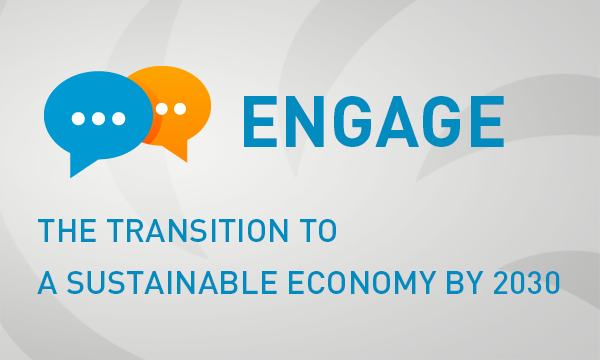
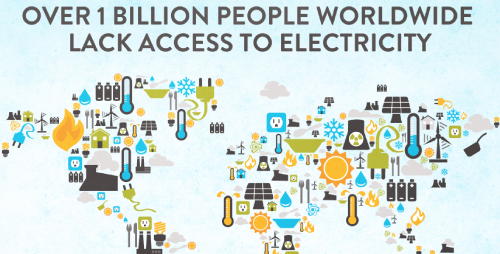
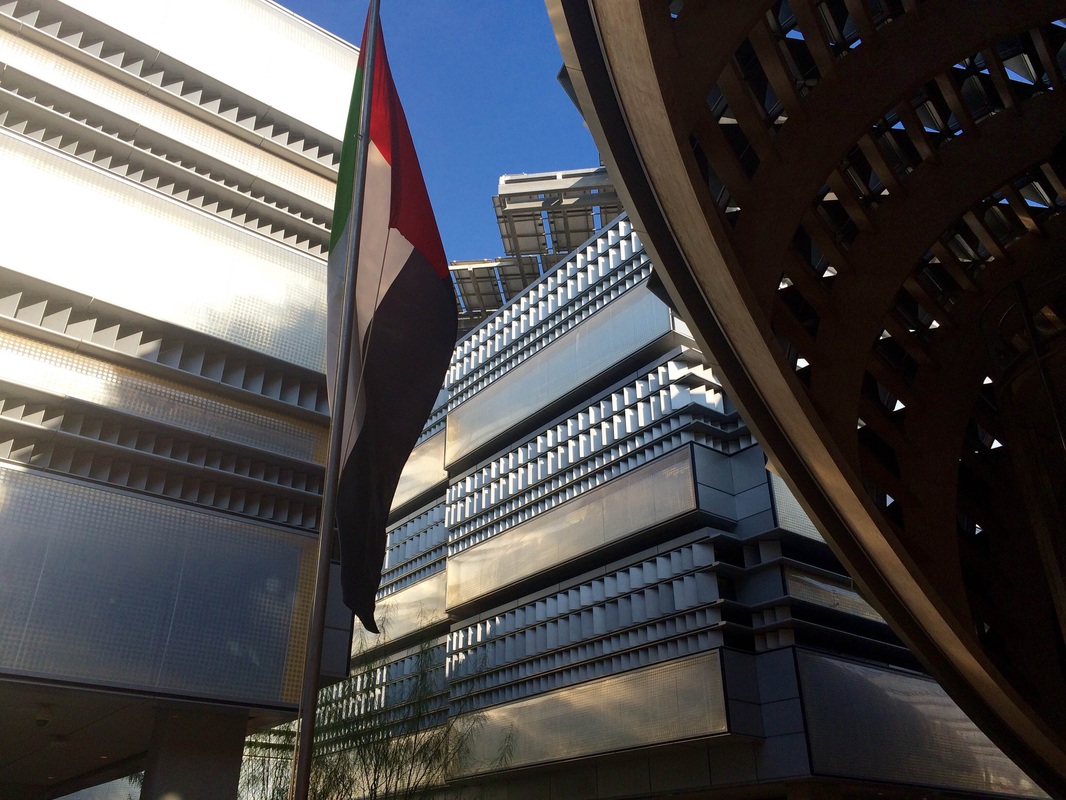
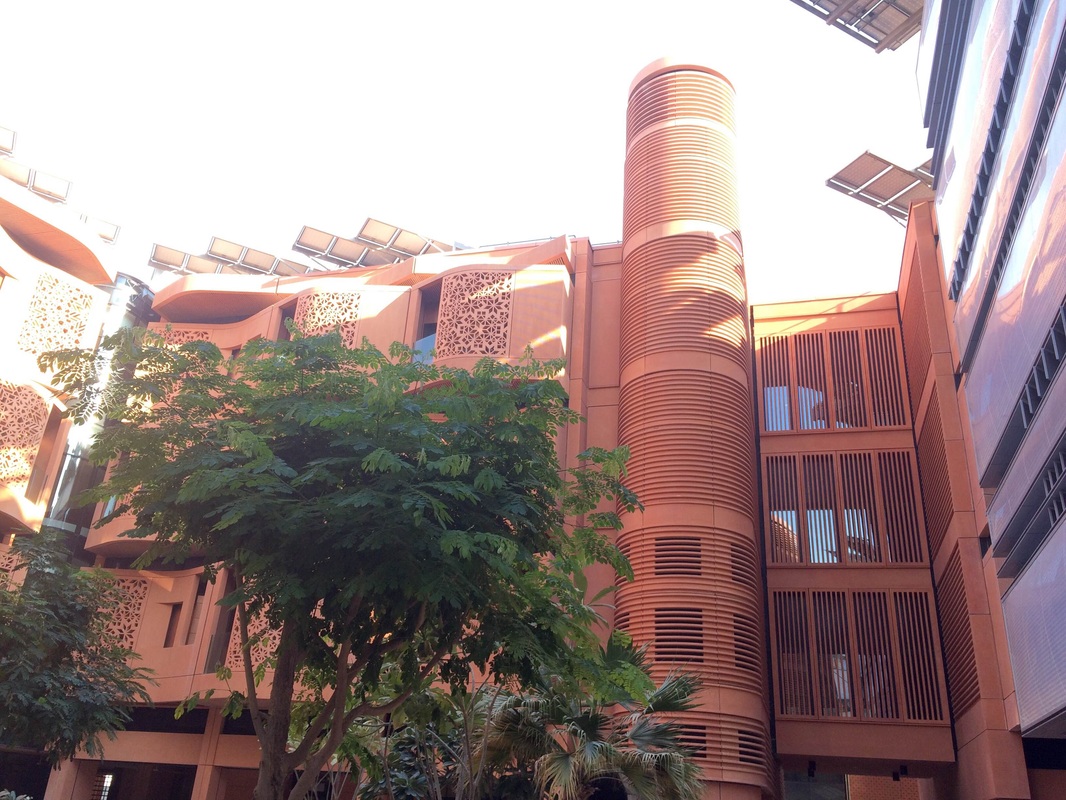
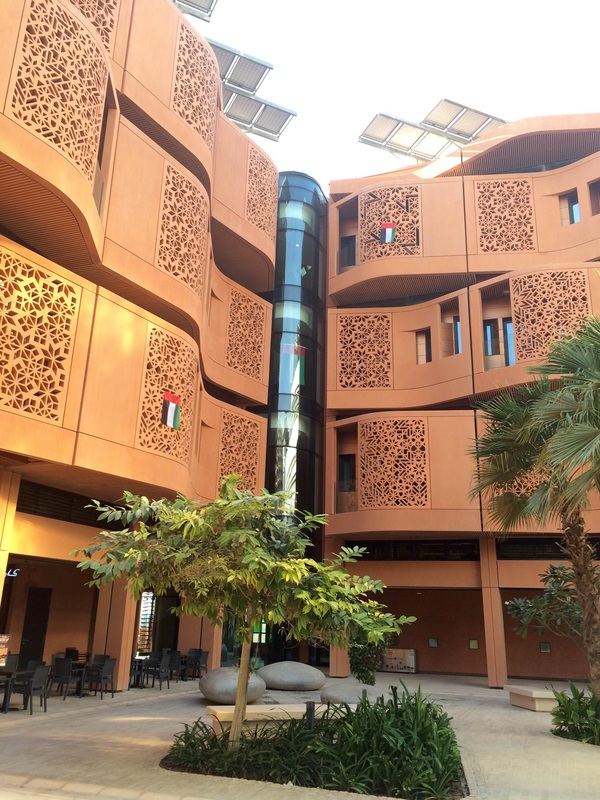
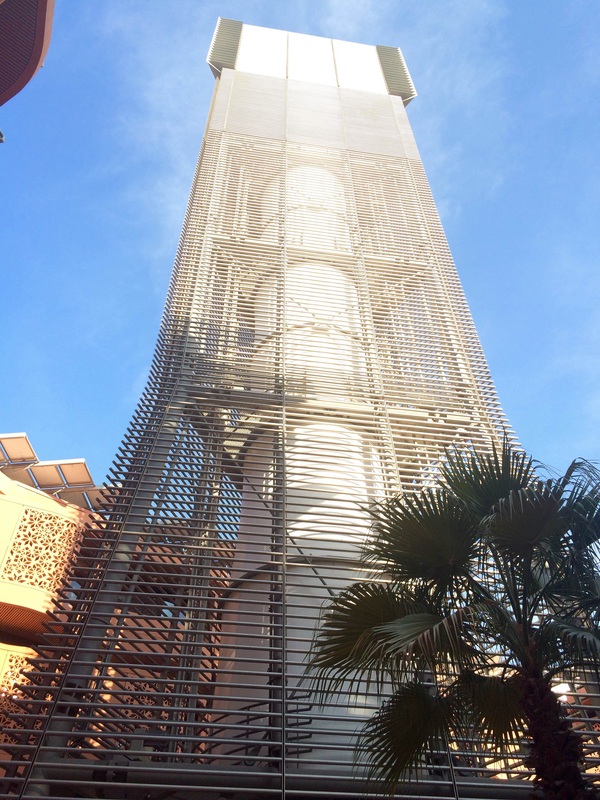
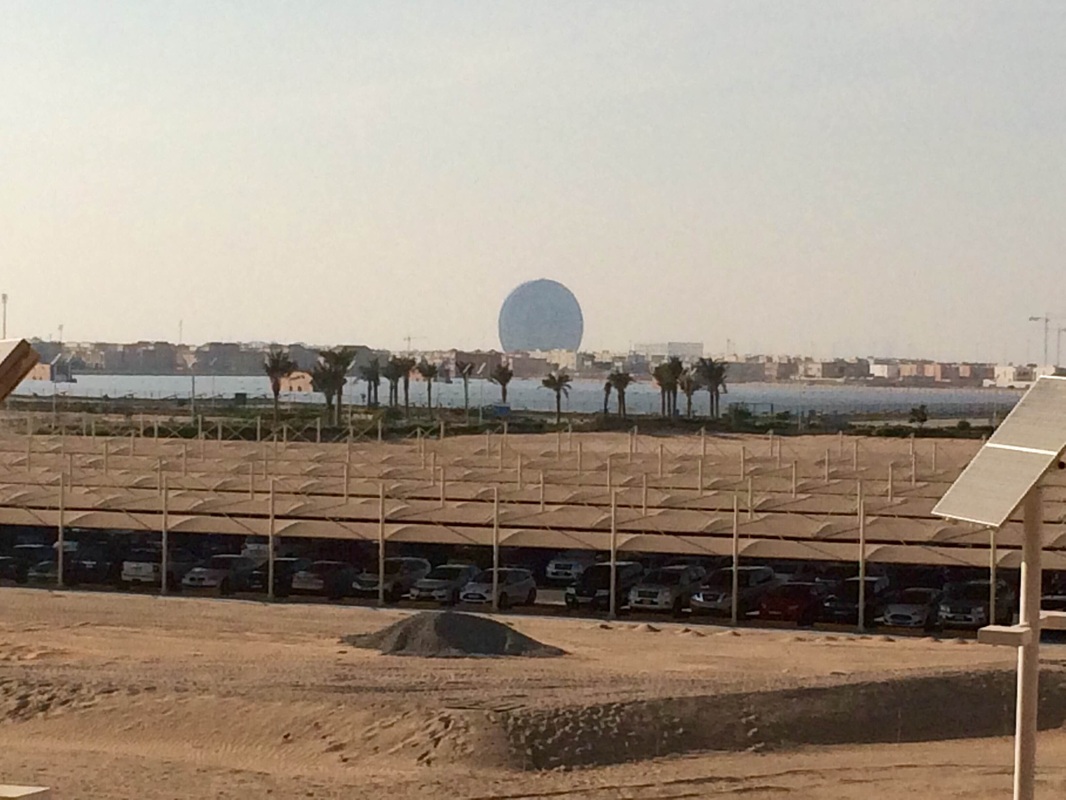
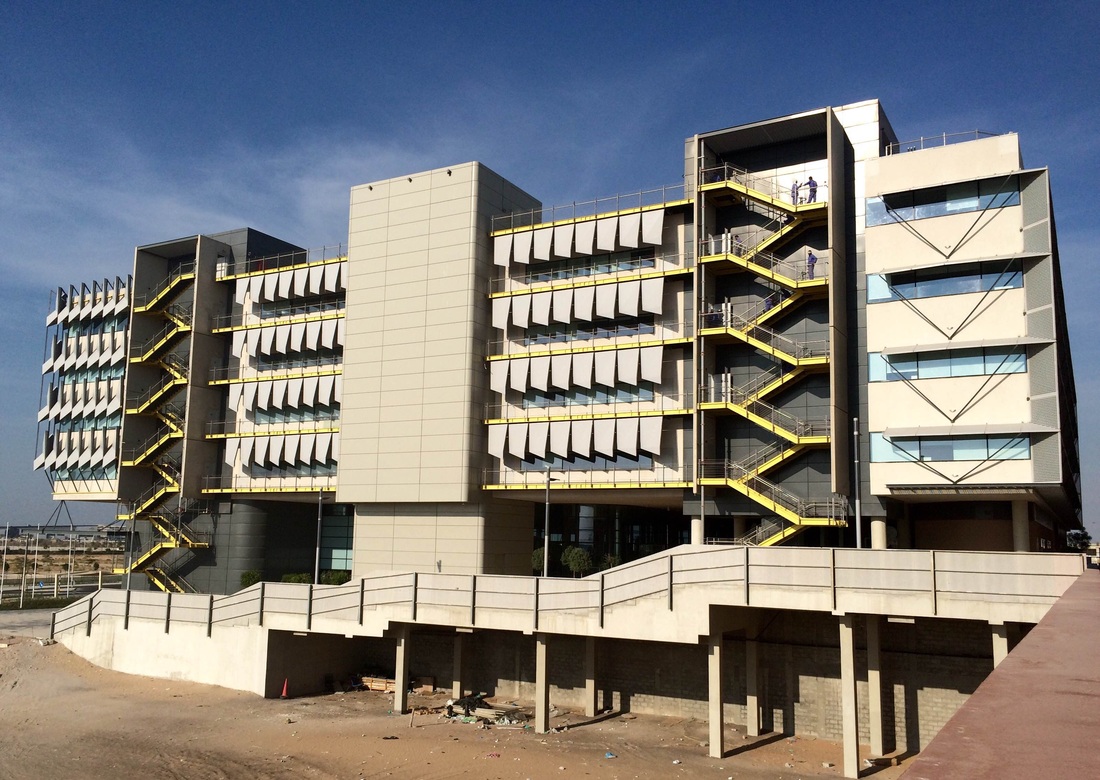
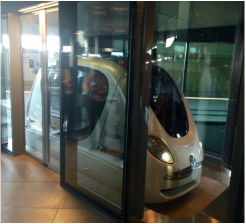
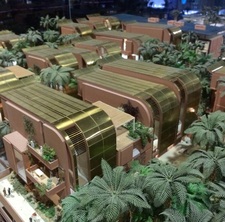
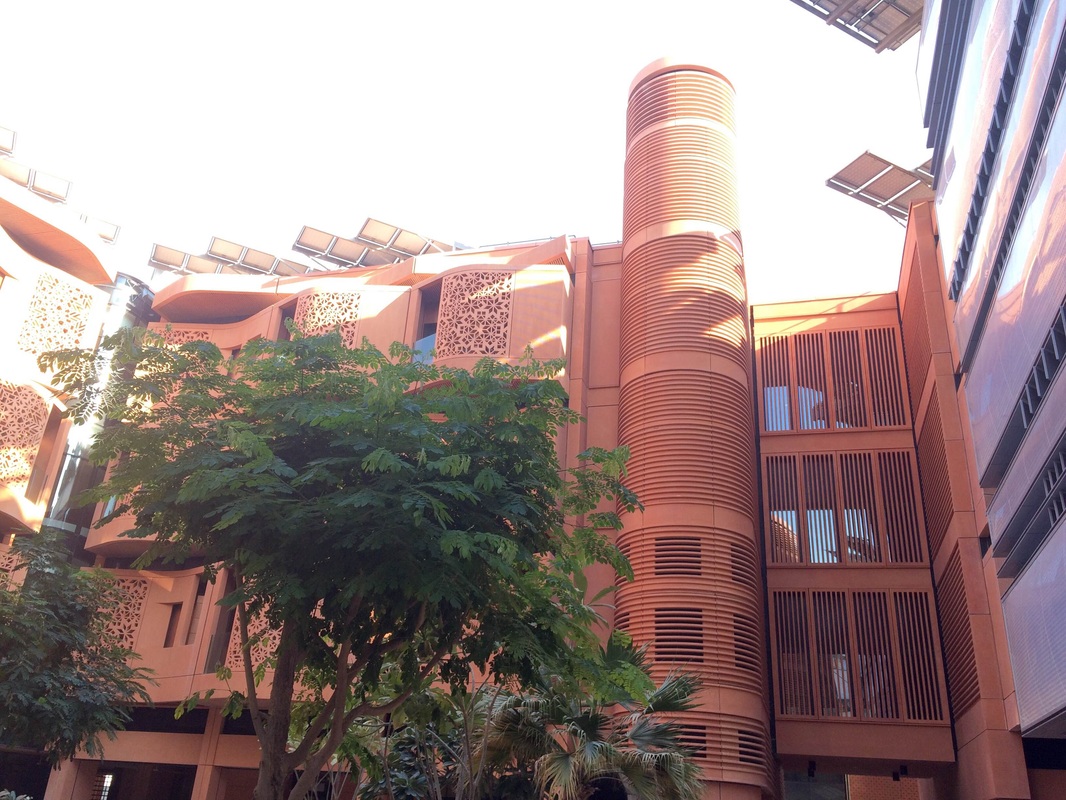
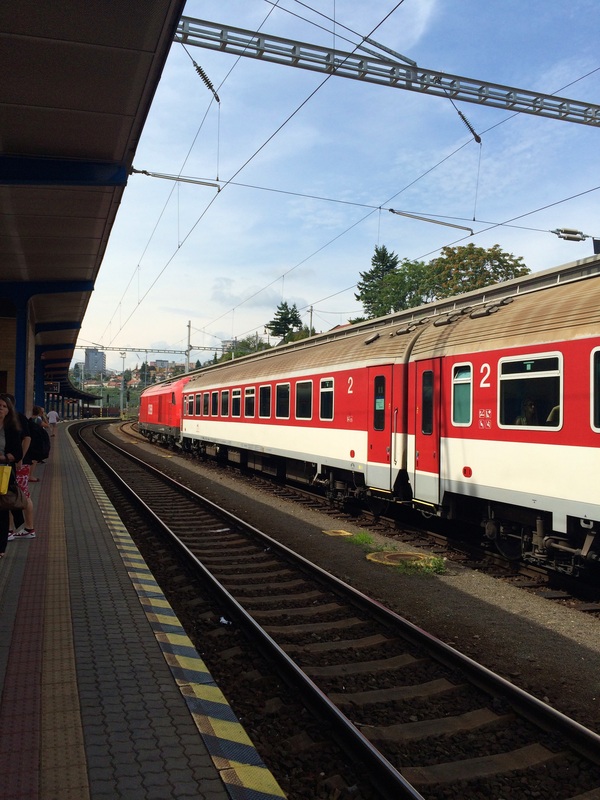
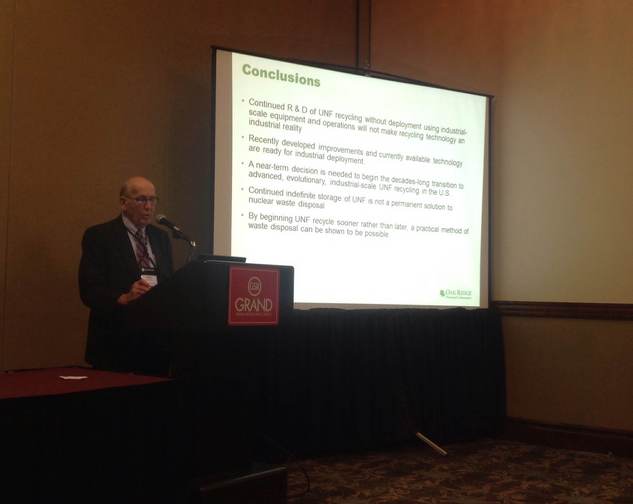
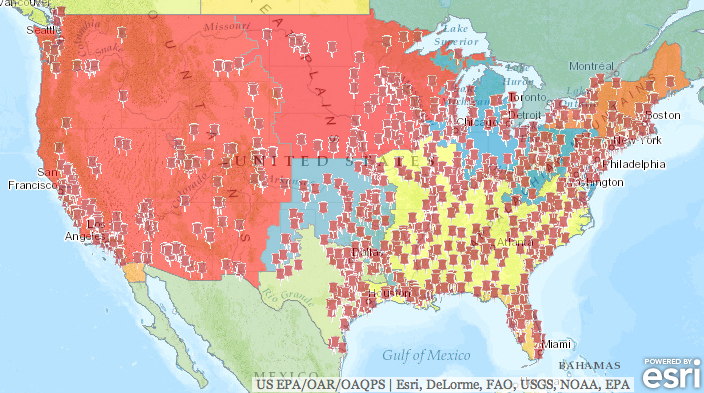
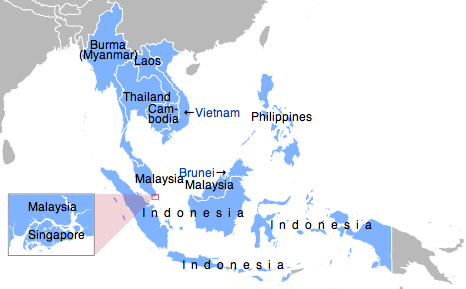
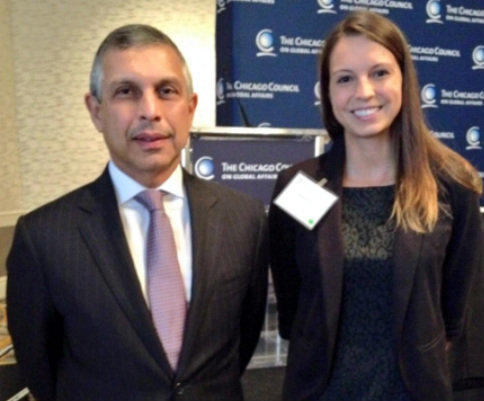

 RSS Feed
RSS Feed

